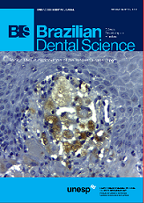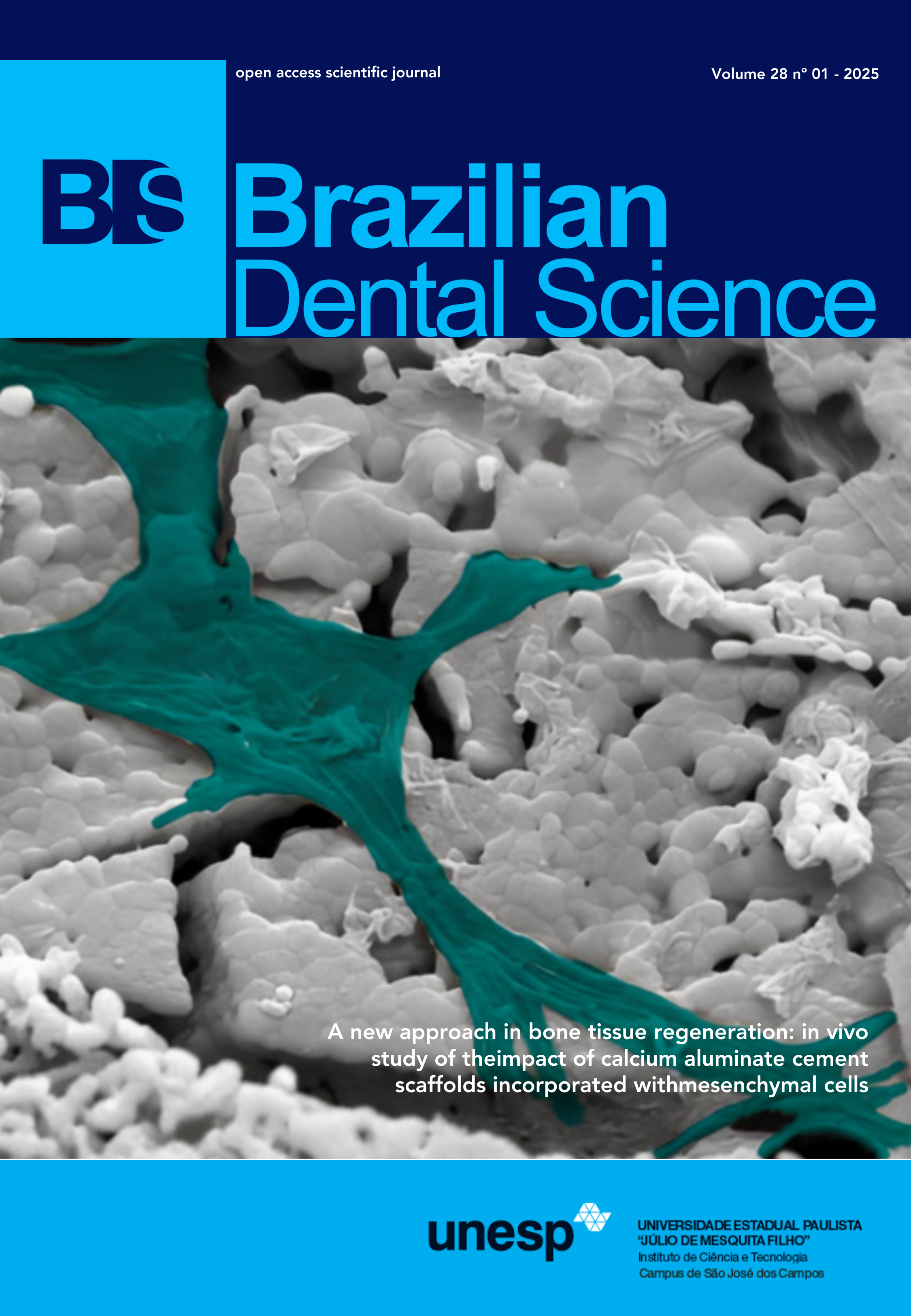Evaluation of masticatory and salivary parameters in preschool children with different morphological occlusion
DOI:
https://doi.org/10.14295/bds.2017.v20i2.1374Resumen
Objective: To better understand the relationship between malocclusion and masticatory and salivary functions in the primary dentition, the aim was to evaluate the differences in masticatory performance (MP), facial morphology (FM), maximal bite force (BF) and salivary parameters in 65 preschool children with normal occlusion (n = 22), functional posterior crossbite (n = 20) and anterior open bite (n = 23), and to explore the relationship between these variables. Material and Methods: MP, FM and BF were assessed by sieving method, anthropometry and gnatodynamometer, respectively. Stimulated (SS) and unstimulated (US) saliva flow and composition were measured by automated colorimetric technique. Data were analyzed using ANOVA/Kruskal-Wallis, t-test/Wilcoxon and Pearson/Spearman correlation test. The relationship between SS flow rate and the independent variables were assessed using multiple linear regression. Results: The lower face dimension was smaller in crossbite-group, and a decreased BF in the crossbite-side of the dental arch was observed. BF correlated positively with intergonial width in open bite group. In malocclusion groups, better MP correlated with byzigomatic and intergonial widths. US flow rate was lower in crossbite-group and total protein concentration differed between SS and US saliva only in the crossbite-group, being lower in US. Amylase activity was higher in SS than US in all groups. SS flow rate related positively with age and negatively with the presence of malocclusion. Conclusion: In young subjects, significant correlations were found between masticatory parameters and facial dimensions; in addition, some important masticatory and salivary parameters differed between children with different morphological occlusions, hence the importance of the early assessment of these parameters.
KEYWORDS
Bite Force; Dental Occlusion; Masticatory System; Primary Dentition.
Descargas
Descargas
Archivos adicionales
Publicado
Cómo citar
Número
Sección
Licencia
Brazilian Dental Science uses the Creative Commons (CC-BY 4.0) license, thus preserving the integrity of articles in an open access environment. The journal allows the author to retain publishing rights without restrictions.
=================
COPYRIGHT TRANSFER AND RESPONSIBILITY STATEMENT
(PDF)
For all articles published in the BDS journal, copyright is retained by the authors. Articles are licensed under an open-access Creative Commons CC BY 4.0 license, meaning that anyone may download and read the paper for free. In addition, the article may be reused and quoted, provided that the original published version is cited. These conditions allow for maximum use and exposure of the work while ensuring that the authors receive proper credit. All metadata associated with published articles is released under the Creative Commons CC0 Universal Public Domain Dedication.
Before the submission, authors must obtain permission to reproduce any published material (figures, schemes, tables, or any extract of a text) that does not fall into the public domain or for which they do not hold the copyright. Permission should be requested by the authors from the copyright holder (usually the Publisher, please refer to the imprint of the individual publications to identify the copyright holder).
The authors hereby attest that the study is original and does not present manipulated data, fraud, or plagiarism. All names listed made a significant scientific contribution to the study, are aware of the presented data, and agree with the final version of the manuscript. They assume complete responsibility for the ethical aspects of the study.
This text must be printed and signed by all authors. The scanned version should be submitted as supplemental file during the submission process.




